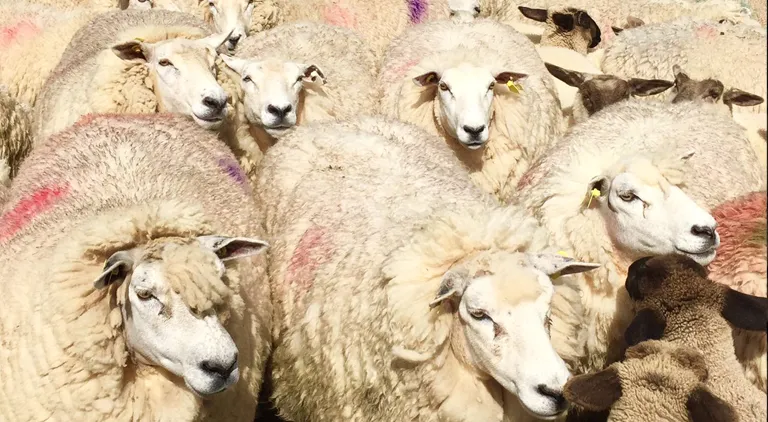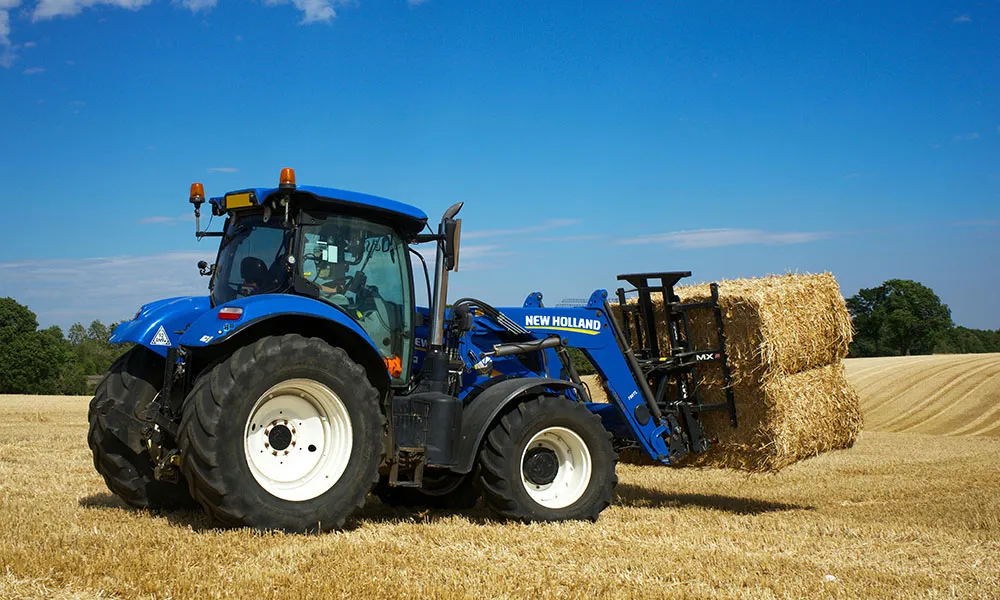
It’s that time of year again where sheep farmers around the country are facing into battle with the dreaded blowfly.
Blowflies are the most widespread external parasite affecting sheep in the UK and Ireland. If not properly controlled, sheep farmers can be left facing serious welfare and productivity issues, including loss of condition, reduced wool clip and leather quality, disease transmission and death. A strike is more likely to occur in warm, humid weather (higher than 9°C) and changing climate patterns in the UK and Ireland have meant the blowfly season is starting earlier, lasting longer, and becoming increasingly difficult to predict.
Agitation, dejection, odour and shedding of wool are all potential signs of a struck animal. Shearing will protect ewes to some extent by removing wool cover and dirty wool on the rear of the ewe, but you should avoid skin damage as damage caused by shearing may attract flies to the area and give grounds for an initial strike. Most farmers believe that prevention is the best cure when it comes to dealing with blowfly and so many will have sheared early in the recent good weather and treated their flocks with a preventative pour on such as Clik, Clikzin, Vector or Ectofly.
Each one comes with its own pros and cons and farmers have to decide what they are looking for in a spray. I’ve listed some of the main points for each for your consideration below.
Pour-ons
- CLiK has a long control period of up to 16 weeks, but this comes with a longer withdrawal period of 40 days. Because of this, CLiK may not be a good choice for use on lambs from early lambing flocks that will have a shorter period of slaughter. Farmers more commonly use CLiK on younger or lighter lambs where the 40-day withdrawal period will not be an issue.
- CLiK Extra has an even longer control period of 19 weeks and the benefit of same withdrawal period. With the potential strike period seemingly extending year on year many farmers are opting for the extra three weeks guarantee.
- CLiKZiN comes with a much shorter withholding period of seven days, which is much more useful as summer progresses for those with heavier lambs. Many farmers won’t use it on Ewe’s or stock that they are keeping as they deem the 8 weeks too short.
- Both Youngs Vector and Ectofly are pour-ons with a wider range of parasitic control. It is active against ticks, head flies and biting lice. They can also be used to prevent and treat fly strike. They have a control period for the prevention of fly strikes of up to eight weeks and comes with a withdrawal period of seven days.
As with all Veterinary products care should be taken while handling any of the above products. The first step when applying any pour-ons to sheep should be protective clothing. This is something most sheep farmers I know fail to adhere to. While applying pour-ons is a relatively safe process, you should still ensure that there is no contact between the product and skin. As such gloves should be worn as this is where you are most likely to get spillage when applying a pour on to the sheep.
Dipping
Though pour-ons are the easiest and safest way of protecting your sheep from blowfly strike, there are many farmers who still prefer to dip their sheep as a means of preventing strike. Most also believe that dipping is the best way of treating a flock that has been struck, particularly when large numbers have been affected.
Dips also give the added benefit of having a broader spectrum of control with products offering cover against ticks, scab, lice and keds. (Vector and Ectofly also offer this protection) Where farmers are considering dipping, they should be aware that the control period with dipping products is generally shorter than pour-ons.
There are several methods of dipping available – plunge-dipping, shower and spray units, but some dip solutions are only suited to one, for example Cyper Guard recommends you use only as a plunge dip.
It is essential when mixing the dip solution to do so to the correct concentration and have extra on hand to allow for losses. I include a list of the most popular dips with their main features included for consideration.
Dips
- Hygeia Summer dip has a 35 day withdrawal period. It has a very strong smell and full safety equipment should be worn. It has a 0.5 gallon to 200 gallon dilution rate
- Ectoflits has a 35 day withdrawal period. It also has a strong smell and full safety equipment should be worn when using. It has a 3ltr to 1000 Gallon dilution rate
- Cyper Guard is a Non-OP dip that has a withdrawal period of just 14 days. It has very little smell but full precaution should be taken while using. It has a dilution rate of 2ltr to 220 gallons.
Dipping Safety
Unfortunately use of these products comes with a much higher risk to the farmer, with the biggest risk coming when handling products containing organophosphate. These pose a significant health risk to farmers exposed to them. Many farmers know the risk but still don’t take the necessary care when working with them. Many will tell you “sure we all but drank it when we were young and we’re grand”.
This is a foolish mentality. Not only has organophosphate use from previous reckless years resulted in massive losses of fish in our local rivers, it is also been linked to numerous cancers.
However the greatest risk is due to Organophosphate poisoning, which can cause serious problems such as very narrowed pupils, confusion, agitation, convulsions, excessive body secretions, including sweat, saliva, mucus, and tears, irregular heartbeat, collapse, respiratory depression or arrest, coma or death.
Poisoning can be immediate or gradual over a prolonged period of time so if you use dips year on year you should take extra precautions.
Full protective clothing including goggles and a respiratory mask with the appropriate filter should be worn, such as the one found here. (There are cases of farmers having vocal cords damaged from breathing in the noxious fumes from dipping fluid.)
The dipping process requires the sheep to be submerged in the dip for a period of about one minute. For that reason, there is a high risk in terms of splash contaminations so you should have no skin left uncovered for the duration. All products will outline the necessary safety parameters for handling each product and what to do if contamination occurs, and these should be followed exactly. After handling products you should always wash your hands and clothes.
Do not be tempted to smoke or eat during the practice without adequate washing first. Scratching your nose, eyes or mouth is also to be avoided until you have washed and changed. If handling ewes in the weeks after dipping, chemical residues are likely to still be present, so protective clothing should be used along with gloves if sheep have to be handled for any reason.
Make sure to store all veterinary medicines in a secure store or a shed that can be locked and not accessed by children at all times when not in use.
Dispose of correctly Dip can be a harmful substance if not disposed of correctly. The dipping tank should be emptied after use and should possess the capability to have a secure lid locked in place. It is recommended that sheep dip be diluted at a ratio of 1:3 with dairy washings, water or slurry. Sheep dip should be spread at a rate not exceeding 5,000 litres/ha. Refer to the product details for more information.
RGA










